Here is what I feel is possible(?) Relevant(?) Useful (?) from my notes on companion planting/attracting beneficial insects. This info is cut and pasted, I will try to reference the sources.
http://www.zenfulneps.com/CompanionPlants/Index#cgvfhmEHBewhu5Sm.99
Use amaranth as trap crop for cucumber beetles to lure away from melons and cukes.
Annuals to attract beneficials: Basil, Bee Phacelia, Birds Eyes, Blue Lace Flower, California Poppy, Candytuft, Chervil, Coriander, Corn Poppy, Cosmos, Dill, Lobelia, Meadow Foam, Mexican Sunflower, Pincushion Flower, Signet Marigolds, Sunflowers, Sweet Marjoram, Tidy Tips.
Asparagus companions Dill, Coriander, Tomato, Parsley, Basil, Marigold, Comfrey, Strawberry Onion, Garlic, Potato
Bachelor Buttons: flower flies, ladybugs, lacewings, and beneficial wasps, the plant's leaves release nectar even when the flowers are not blooming
Basil: Repels aphids, flies, mosquitos and mites; helps control insect pests such as tomato hornworms, asparagus beetles, and disease. Basil will kill your rosemary. [This was contradicted in other sources] Depending upon your plans Anise is supposed to increase the essential oil production in basil
Beautyberry (Callicarpa americana ): This is exactly what you can do with beautyberry (Callicarpa americana ), a deciduous shrub of the southeastern woods best known for its bracelet-like clusters of showy purple berries that ripen in fall. Compounds found in beautyberry leaves have shown amazing natural insect repellent properties, proving the worth of the centuries-old practice of placing leaves under mule harnesses to deter biting insects. Japanese beautyberry (C. japonica , hardy to Zone 5) contain both compounds.
Borage: Repels tomato worms. Adds potassium, calcium and other minerals to soil. Attracts honeybees. Borage may benefit any plant it is growing next to via increasing resistance to pests and disease. It also makes a nice mulch for most plants. Borage and strawberries help each other and strawberry farmers always set a few plants in their beds to enhance the fruits flavor and yield. Plant near tomatoes to improve growth and disease resistance. After you have planned this annual once it will self seed. Borage flowers are edible. Plant w/squash?
Buckwheat: Accumulates calcium and can be grown as an excellent cover crop. Attracts hover flies in droves. Do not plant buckwheat as a companion crop with legumes, as its early competitiveness for nutrients
cabbage: Thyme repels cabbage worm, while dill attracts cabbage worm predators. Cabbage helps dill grow strong and upright. Tomatoes also repel diamondback moth larva that likes to chew on cabbage leaves.
Catnip: Catnip helps prevent flea-beetle damage on the collards, Fresh catnip steeped in water and sprinkled on plants will drive away flea beetles. Deters flea beetles, aphids, Japanese beetles, squash bugs, ants and weevils, and mice. Helps distract cats from rest of the garden.
Chamomile: Improves growth and flavor--but plant only one plant every 150 feet or so. Growing chamomile of any type is considered a tonic for anything you grow in the garden. Host to hoverflies and wasps. Growing near herbs will increase their oil production
cilantro: This familiar kitchen spice will deter aphids, potato beetles, and spider mites. It’s a good companion to anise, caraway, spinach and dill. If you have continued problems with spider mites, a tea made from coriander can repel them. A tea from this can be used as a spray for spider mites. Partners coriander are for anise, caraway, potatoes and dill
Cosmo: Cosmos attracts hoverflies, parasitic wasps, tachinid flies and bees. http://www.hobbyfarms.com/5-ornamental-plants-that-could-save-your-vegetables-2/
cowpeas: Because a number of varieties set seeds at as early as two months, cowpeas are outstanding candidates to follow spring crops and set nitrogen for heavy-feeding, fall-planted alliums. http://www.motherearthnews.com/organic-gardening/gardening-techniques/summer-cover-crops-zm0z14aszsto?pageid=1#PageContent1
Cup Plant: Beneficial insects and small birds can easily use the leaves as landing pads, and then drink from the cups.
Culantro: Anecdotal reports mention that the flower heads are attractive to ladybugs, green lacewings, and other beneficial insects. Plants around the garden have also reportedly provided excellent defense against aphids.
Dill: http://www.motherearthliving.com/in-the-garden/companion-planting-herbs-to-help-your-garden-grow#ixzz38aHTotdg Companion to lettuce, cabbage, onions, sweet corn and cucumbers, dill should not be planted near carrots, caraway, lavender or tomatoes (it attracts tomato horn worms). This herb will keep aphids, spider mites and squash bugs from taking over your garden and will attract hoverflies, wasps, and honeybees. To avoid cross-pollination, don’t plant dill near fennel
Feverfew: The pyrethrin that feverfew contains is a natural insecticide, and today the constituent is added to herbal insect repellent products. We have the early European settlers of America to thank for this, who back in the 16th century are said to have first discovered the ability of feverfew to deter insects from eating their crops. http://www.justbotanics.co.uk/blog/5-Facts-About-Feverfew/
garlic: Repels aphids, weevils, carrot flies, moles, fruit tree borers; Controls rust flies and some nematodes; protects tomatoes against red spiders. Protects roses from black spot, mildew and aphids.
Golden Marguerite: mentioned in several articles. beneficials: ladybugs, lacewings, flower flies, tachinid flies and mini-wasps
Ground Ivy (Glechoma hederacea): repels cabbage worms, cucumber worms and beetles, tomato horn worms, makes a good ground cover.
hairy vetch: Companion Planting Joann Roberson Kindle Book, You can underplant hairy vetch which is a green manure that is resilient even during the winter season with late-season broccolis to provide protection to the soil after the broccolis have been harvested.
Horseradish: Encourages growth. May repel Colorado potato beetles and blister beetles.
Hyssop: Improves growth, deters cabbage moth. Hyssop may be the number one preference among bees and some beekeepers rub the hive with it to encourage the bees to keep to their home. It is not as invasive as other members of the mint family making it safer for interplanting.
Leaf celery, Chinese celery: The growing plant is an insect repellent, celery repels the cabbage white butterfly so is a good companion for all brassicas. It is a good companion for leeks, onions, spinach, tomatoes, and French beans. Flowers for celery are cosmos, daisies and snapdragons http://www.seedaholic.com/celery-leaf-celery-chinese-celery.html
Lemon balm: Wards off squash bugs. Plant freely throughout the garden. Sprinkle throughout the garden in an herbal powder mixture to deter many bugs. Lemon balm has citronella compounds that make this work: crush and rub the leaves on your skin to keep mosquitoes away! Use to ward off squash bugs!
Nasturtiums: Repels aphids, cucumber beetles, whiteflies and squash bugs. Acts as trap crop for aphids. Repels borers near fruit trees. leaves, flowers and seeds are all edible and wonderful in salads.
Oregano: Repels cabbage butterfly. Can be used with most crops. Repels cabbage butterflies and cucumber beetles
Ornamental Grasses: All clump-forming grasses provide excellent summer shelter and overwintering sites for ground beetles, ladybugs and other beneficials
Peppermint: Repels white cabbage moths, aphids and flea beetles. It is the menthol content in mints that acts as an insect repellant. Attracts Bees.
Perennials for beneficials: Asters, angelicas, Basket of Gold, Bishop's Weed, blanketflowers, Blue Cardinal Flower, Bog Rosemary, Catmints, Carpet Bugleweeds, cinquefoils, Comfrey, coneflowers, Coral Vine, coreopsis, Crimson Thyme, crocus, Evening Primrose, Feverfew, Garlic Chives, Goldenrod, Jerusalem Artichoke, Lavender, Lavender Globe Lily, Lovage, lupines, milkweeds, Mountain Sandwort, peonies, Pincushion Flower, Poppy Mallow, Queen Anne's Lace, Rocky Mountain Penstemon, Sea Lavender, Sea Pink, stonecrops, Fernleaf Tansy, Teasel Thrift, Toothpick Ammi, Wild Bergamot, Wood Betony, yarrow, Patrinia.
Petunias: They repel the asparagus beetle, leafhoppers, certain aphids, tomato worms, Mexican bean beetles and general garden pests. A good companion to tomatoes, but plant everywhere. The leaves can be used in a tea to make a potent bug spray.
Pussy Willows: they produce pollen so early in the spring when many beneficials are just emerging
Pyrethrum (Chrysanthemum cinerariifolium): Repels aphids, leafhoppers, spider mites, harlequin bugs, ticks, pickleworms and imported cabbage worms.
Radish: Planting radishes near your spinach helps to keep leaf miners away from delicate spinach leaves and allows the radishes to grow unharmed underground. Deters cucumber beetles. Radishes may protect squash from squash borers. Chervil and nasturtium are known to improved growth and flavor of radishes
Rhubarb: Planting radishes near your spinach helps to keep leaf miners away from delicate spinach leaves and allows the radishes to grow unharmed underground. Deters cucumber beetles. Radishes may protect squash from squash borers [Not in my experience]. Chervil and nasturtium are known to improve growth and flavor of radishes
Sage: Repels carrot flies, cabbage moths, ticks. Plant with rosemary, cabbage and carrots; keep away from cucumbers. Deters cabbage moth, carrot fly. Another herb to pair with beans, broccoli, cauliflower, cabbage and carrots as it repels cabbage moths, black flea beetles, carrot flies and some bean parasites. Again, sage grows well with rosemary, but do not plant it close to rue, cucumbers or onions. (It grows really well next to my rosemary)
Sweet Alyssum: fast-growing, beneficials-attracting, weed-smothering ground-cover
Tansy: Deters flying insects, striped cucumber beetles, ants, flies, squash bugs and Japanese beetles. Note: attracts cabbageworms. Toxic to many animals.
Thyme: repels flea beetles, cabbage maggots, imported cabbage worms and white cabbage butterflies. Attracts cabbage worm predators.
Valerian: Adds phosphorus. Good anywhere in garden. Good in compost heaps and good for earthworms
Wormwood: Deters black flea beetles, malaria mosquitos, cabbage worm butterflies. Keeps animals away when planted as a border [may add toxic absinthe to soil and effect pants around it.]
Yarrow: Insect repelling qualities. Plant along borders, near paths, near aromatic herbs; enhances essential oil production of herbs. Improves soil quality. Leaves make great compost.
Zinnia: attracts wasps, hoverflies, and humming birds, ladybugs. Plant freely throughout the garden. Zinnia is notorious as a target for mold and fungal growths.
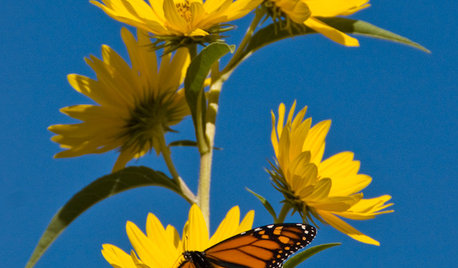
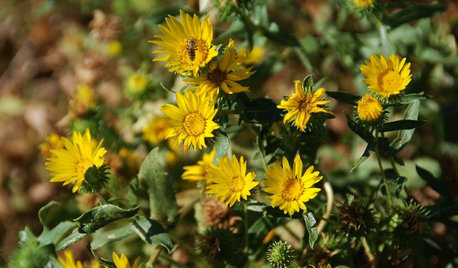

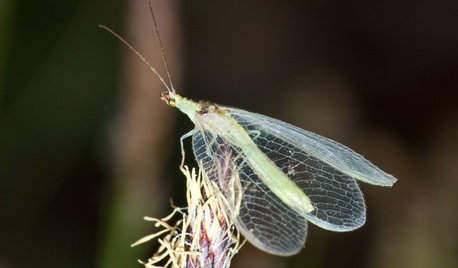
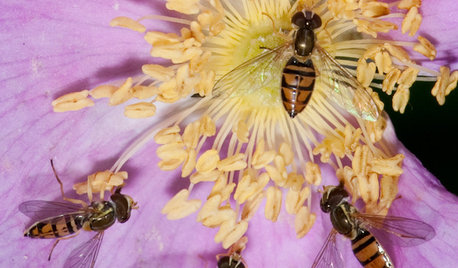
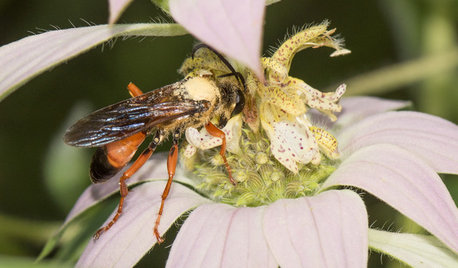


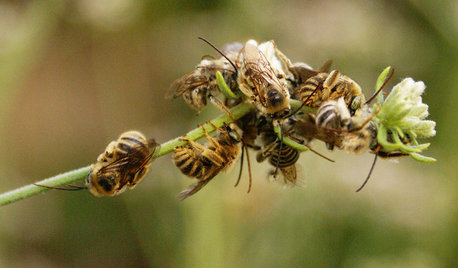
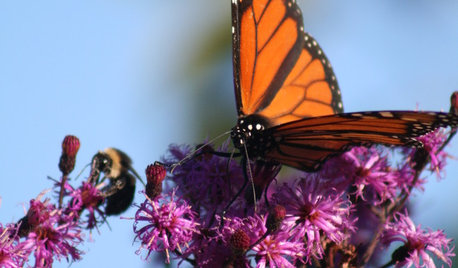



luvncannin
AmyinOwasso/zone 6bOriginal Author
Related Discussions
Garden plants that are beneficial to soil
Q
Companion planting guide for free
Q
plants for beneficials
Q
Attracting Beneficial Insects to Your Landscape
Q
Turbo Cat (7a)
AmyinOwasso/zone 6bOriginal Author
Okiedawn OK Zone 7
Turbo Cat (7a)
AmyinOwasso/zone 6bOriginal Author
AmyinOwasso/zone 6bOriginal Author
Okiedawn OK Zone 7
Okiedawn OK Zone 7